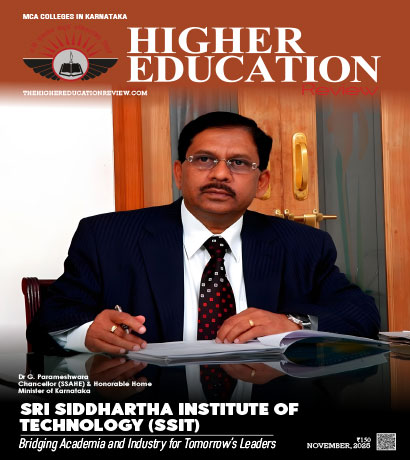Quality Issues in Higher Education

Unlike Technology the higher education needs continuous up gradation. The issue of better quality in higher education has been a great concern for all who are directly or indirectly associated with the education and academic system. The reason is very obvious since the higher education could not keep required pace with the changes in technology, new trends of education system, occupational diversity, Global market trends and so on. from time to time. Obviously, education system that could not serve the needs and expected aspirations of the market is not received well and pose questions on its efficiency and effectiveness.
Though the issue of quality in higher education is most talked about but it is equally true that this issue is least understood in its true spirit. The different stakeholders viz. students, teachers, academic institutions, regulatory bodies, professional, government, market Pundits and others have their own perspective and gauge the quality of higher education on different parameters in their own framework. In India, the graduates are assumed as products where their career prospects depend on the very quality of education they pursue. To ensure the degree of quality, we have two broad parameters one, the accreditation of academic programs by the government agencies and others and grading of academic institutions by private professional agencies based on predetermined parameters. However, in reality, both the approaches per-se, have their own limitations and suffer with a foolproof mechanism. This gives much scope for improvement to focus on all round qualitative aspects to prepare graduates what market needs in the current competitive environment.
There is no meaning in discussing what has gone wrong with the quality in the past, let us discuss few measures that help the quality of higher education where it becomes conspicuous.
1. There is strong need for a clear demarcation among students if their preference is just to gain a useful employment, give a practical shape to their start up idea or strengthen the academic and research skills. The delivery mechanism and kind of exposure necessarily have to match with the preferences to bring the excellence.
2. The accreditation or grading system in United States is the primary source of information and awareness to protect students against the institutes that are involved in various mal practices and operate under commercial motives. In India, we probably rarely come across such information. The grading and accreditation mechanism taken up by some of private agencies is guided by commercial motives and self vested perceptions. There is a need to have an overhauling of various aspects of quality performance parameters. For instance, the norms for giving weight to research and publications should be guided by quality of publications and not by numbers. Similarly, faculty with PhD is another criteria where quality of doctoral degree obtained needs more weight. Likewise, there are many parameters where quantity parameters overrun the quality aspects.
3. The corporate sector aspirations need to be pursued in terms of occupational diversity. Gone are the days where a mechanical engineering passed out student will stick to engineering job. Today we find many successful CFOs with engineering background, a good number management professionals managing operations more efficiently and so on. Therefore, the higher education institutions have to develop delivery mechanism in that direction to fit into occupational diversity.
4. The most developed and advanced technology has changed the very shape of academic environment, quality of teaching, nature of exposure etc. While, the teacher teaches in class, the students have everything at their tab and at times, the students are more updated than a teacher. The students prefer and are keen on learning evidenced based business practices. The students need to know and understand the concurrent best business practices being followed across the globe.
5. The quality of teachers in general and higher education in particular has posed serious challenges. The unregulated growth of higher education in India in the recent two decades has had large ramifications. Many engineering and management institutes have hired teachers at low cost overlooking the very quality of teacher.
6. Unlike Japanese concept of quality as continuous improvement, it is equally important in higher education as pre-defined principles and concepts hardly match with the organizational learning and technology. This calls for strengthening the concept of continuous improvements bringing innovations and desired quality in academic contents and delivery.
7. Leadership in higher education that involves promoters, Board of governors, Director etc. play a very significant role as institution building in true sense is herculean task that requires time, patience and lot of self sacrifices. In majority of higher education institutions this aspect calls for serious efforts.
8. Each institution needs to decide key performance indicators and benchmarks based on specific quality parameters and work on it consciously. That becomes a roadmap for all stakeholders.
9. New and changing trends in higher education across the Globe have to receive priority and a careful evaluation to incorporate in the required quality parameters.
10. Last but not the least, the changing attitude and approach among students pursuing higher degree call for a serious consideration as there seems to be a large deterioration over the years. The kind of passion in learning and understanding lack in majority of students.
Finally, the quality in higher education should infuse as self consciousness rather than giving more thrust to merely complying with regulatory guidelines.
Prof. Kanhaiya Singh
Prof. Singh, a banker turned academician has nearly 3 decades operational experience in banking and financial services area. He has been in teaching for the past 15 years has conducted considerable research work and presented the same in national and international conferences.
Though the issue of quality in higher education is most talked about but it is equally true that this issue is least understood in its true spirit. The different stakeholders viz. students, teachers, academic institutions, regulatory bodies, professional, government, market Pundits and others have their own perspective and gauge the quality of higher education on different parameters in their own framework. In India, the graduates are assumed as products where their career prospects depend on the very quality of education they pursue. To ensure the degree of quality, we have two broad parameters one, the accreditation of academic programs by the government agencies and others and grading of academic institutions by private professional agencies based on predetermined parameters. However, in reality, both the approaches per-se, have their own limitations and suffer with a foolproof mechanism. This gives much scope for improvement to focus on all round qualitative aspects to prepare graduates what market needs in the current competitive environment.
There is no meaning in discussing what has gone wrong with the quality in the past, let us discuss few measures that help the quality of higher education where it becomes conspicuous.
1. There is strong need for a clear demarcation among students if their preference is just to gain a useful employment, give a practical shape to their start up idea or strengthen the academic and research skills. The delivery mechanism and kind of exposure necessarily have to match with the preferences to bring the excellence.
2. The accreditation or grading system in United States is the primary source of information and awareness to protect students against the institutes that are involved in various mal practices and operate under commercial motives. In India, we probably rarely come across such information. The grading and accreditation mechanism taken up by some of private agencies is guided by commercial motives and self vested perceptions. There is a need to have an overhauling of various aspects of quality performance parameters. For instance, the norms for giving weight to research and publications should be guided by quality of publications and not by numbers. Similarly, faculty with PhD is another criteria where quality of doctoral degree obtained needs more weight. Likewise, there are many parameters where quantity parameters overrun the quality aspects.
3. The corporate sector aspirations need to be pursued in terms of occupational diversity. Gone are the days where a mechanical engineering passed out student will stick to engineering job. Today we find many successful CFOs with engineering background, a good number management professionals managing operations more efficiently and so on. Therefore, the higher education institutions have to develop delivery mechanism in that direction to fit into occupational diversity.
4. The most developed and advanced technology has changed the very shape of academic environment, quality of teaching, nature of exposure etc. While, the teacher teaches in class, the students have everything at their tab and at times, the students are more updated than a teacher. The students prefer and are keen on learning evidenced based business practices. The students need to know and understand the concurrent best business practices being followed across the globe.
5. The quality of teachers in general and higher education in particular has posed serious challenges. The unregulated growth of higher education in India in the recent two decades has had large ramifications. Many engineering and management institutes have hired teachers at low cost overlooking the very quality of teacher.
6. Unlike Japanese concept of quality as continuous improvement, it is equally important in higher education as pre-defined principles and concepts hardly match with the organizational learning and technology. This calls for strengthening the concept of continuous improvements bringing innovations and desired quality in academic contents and delivery.
7. Leadership in higher education that involves promoters, Board of governors, Director etc. play a very significant role as institution building in true sense is herculean task that requires time, patience and lot of self sacrifices. In majority of higher education institutions this aspect calls for serious efforts.
8. Each institution needs to decide key performance indicators and benchmarks based on specific quality parameters and work on it consciously. That becomes a roadmap for all stakeholders.
9. New and changing trends in higher education across the Globe have to receive priority and a careful evaluation to incorporate in the required quality parameters.
10. Last but not the least, the changing attitude and approach among students pursuing higher degree call for a serious consideration as there seems to be a large deterioration over the years. The kind of passion in learning and understanding lack in majority of students.
Finally, the quality in higher education should infuse as self consciousness rather than giving more thrust to merely complying with regulatory guidelines.
Prof. Kanhaiya Singh
Prof. Singh, a banker turned academician has nearly 3 decades operational experience in banking and financial services area. He has been in teaching for the past 15 years has conducted considerable research work and presented the same in national and international conferences.

